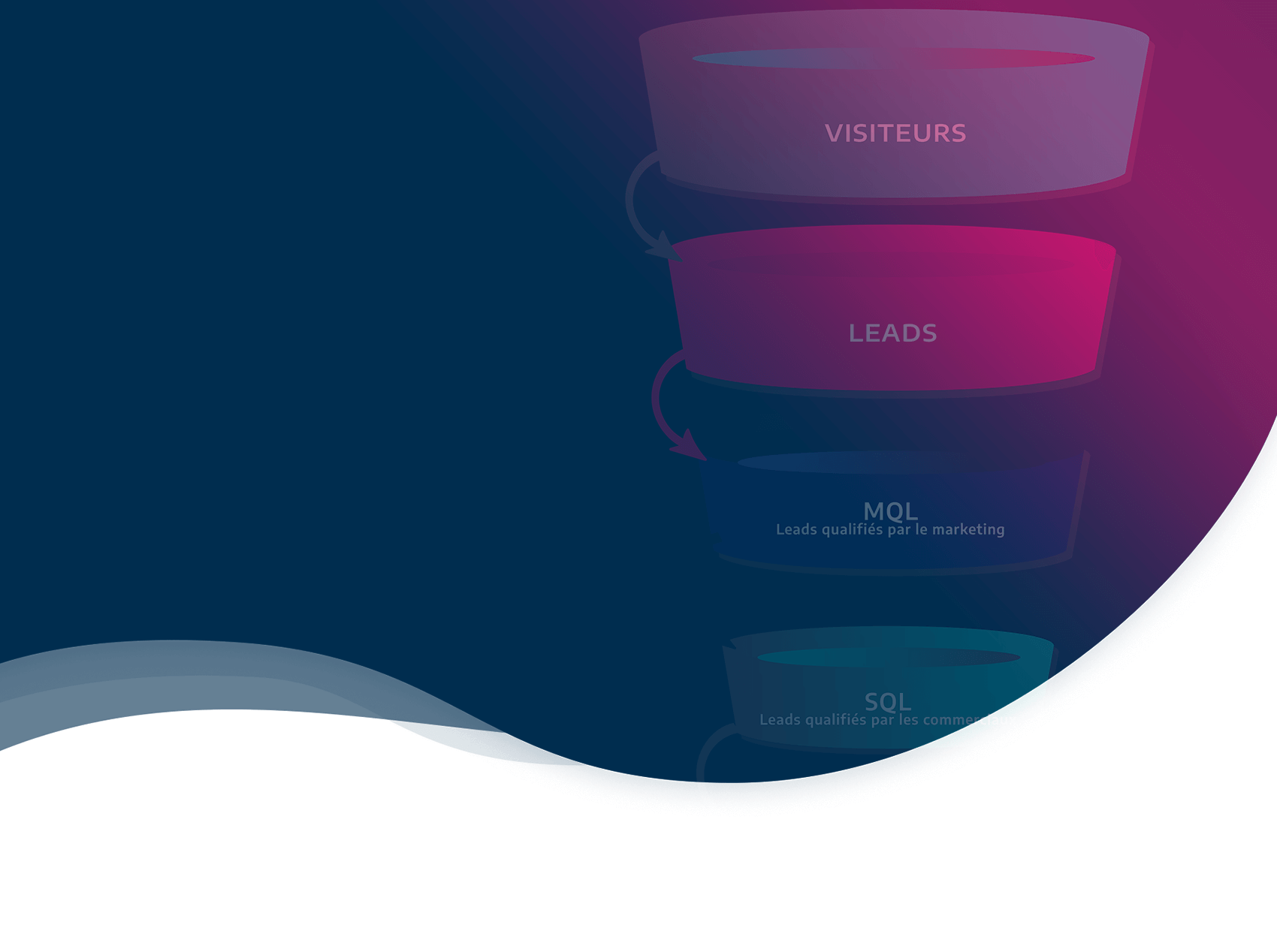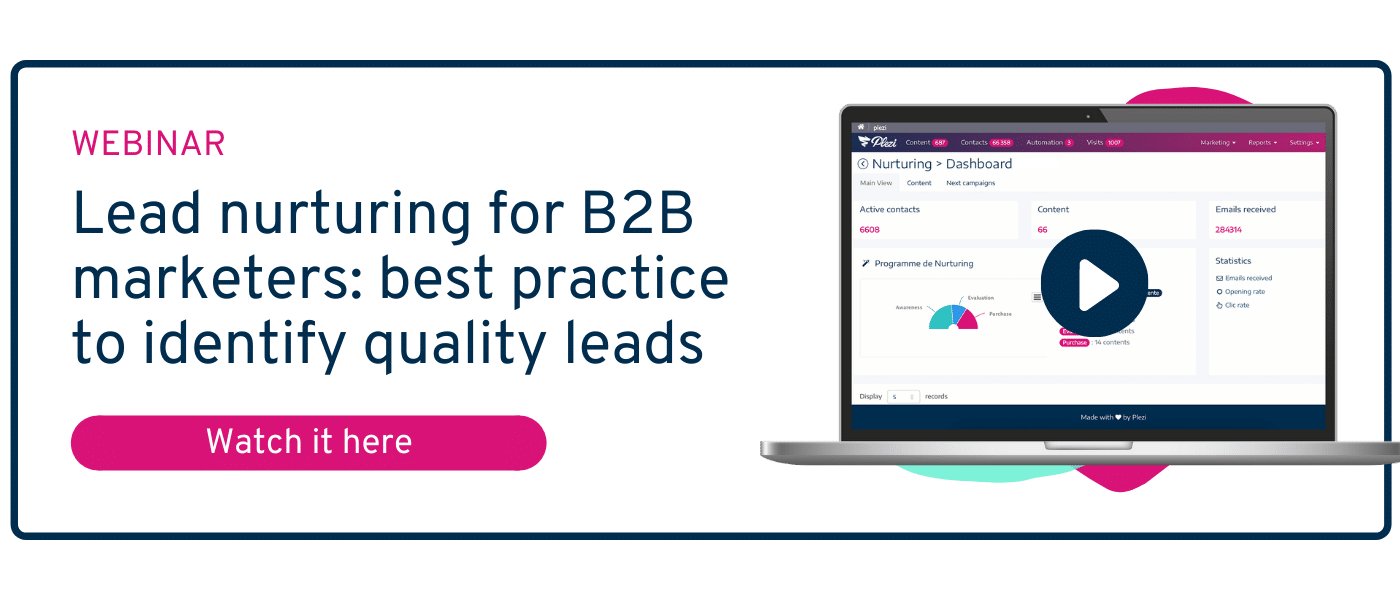Who can really say that they know how many customers they will generate a month due to their marketing actions? How many marketers manage to sidestep their sales channel?
From a website visitor to a customer, the journey can be arduous in B2B…. so let’s see if we can reinforce the fundamentals of our inbound marketing and lead nurturing: the funnel, or what is also known as the acquisition tunnel.
Cut the acquisition funnel into phases
80% of the sales process is done online, without contacting your sales team (source Gartner). That’s why, as a marketer, our job consists of recognising the different phases of the purchasing tunnel, in order to optimize it.
From a visitor to a lead
A lead is someone who has left their contact details on your website. Meaning – you can then contact that person, if you like. Generally, in B2B, 2% of your visitors will leave their details. With an inbound marketing strategy, we can hope to see this figure double to 4% on average.
From a lead to an MQL (Marketing Qualified Lead) :
This is the most difficult phase for marketing: when you consider that a lead is considered to be ‘hot’ and ready to be contacted by the sales team.
For those people still doing things manually, for many that means checking a company credentials and if they meet your target market expectations. For example, at Plezi, that would mean a B2B company that has informative content and a blog.
For companies who use a Marketing Automation solution, a score is associated to the data collected and the navigation of the site from a lead. When that lead hits a certain score, it is transformed into an MQL and will be automatically sent to to the sales team through the CRM.
Statistically, we have seen that 1 in 2 leads are converted into an MQL.
From an MQL to an SQL (Sales Qualified Leads or Opportunities)
What is considered an SQL, or a Business Opportunity, can be qualified using the BANT method:
- B – Budget
- A – Authority – if that person is the decision-maker
- N- Need – If there is a need or a problem
- T – Time – the timeframe for a decision
The definition of an SQL can differ from company to company, It can often be the moment a quote is sent that brings these aspects together. Regardless of what method you choose, the elements within BANT will play a major part.
We have seen that 1 in 3 MQL’s will have the budget, a real need, the decision making power and timeline.
From SQL to Customer:
This is the last phase of the purchasing funnel. Normally completed by a salesperson, but not exclusively. Again, some online companies will complete everything digitally.
At this stage, conversion rates can vary a lot depending on the sales team in place. However, marketing still has a role to play in reassuring the prospect and producing content that speeds up conversion time.
Use of the acquisition tunnel in a marketing strategy
Knowledge of conversion rates are essential in predicting the turnover generated by each marketing action, and, in turn, the return on investment.
So if we take the rates displayed in this infographic, we can infer that we need 834 visitors to generate 1 customer, or 34 leads to generate a customer.
Bear in mind that conversion rates are subject to change, and depend greatly on the length of the purchasing cycle, it can be very complicated to analyze these rates.
However, if you take into account the different trends in every month, quarter and year and set objectives accordingly, you will be able to establish a clearer marketing strategy.
Content within the Acquisition Tunnel
The acquisition tunnel also helps us distribute relevant content within each phase to create a better relationship with our prospects.
Mapping content across all each of these phases means we can quickly see what is missing. Often, we lack content during the evaluation or purchase phase at the end of the tunnel. The infographic above suggests different inspiration for the types of content you could produce.
The Tunnel in Inbound Marketing
For each phase of the acquisition tunnel, we can prioritize the respective channels. Referencing and social networks are an essential upstream of the funnel, then retargeting will take over, then marketing automation.
Each lever is systematically activated for different actions at each stage of the funnel.
Mastering your marketing funnel is a crucial step in digital marketing and will be the basis of all your actions whether in content strategy or an inbound marketing strategy. While it isn’t written in stone, it is a good basis to begin your strategic planning and as an operational monitoring tool.







